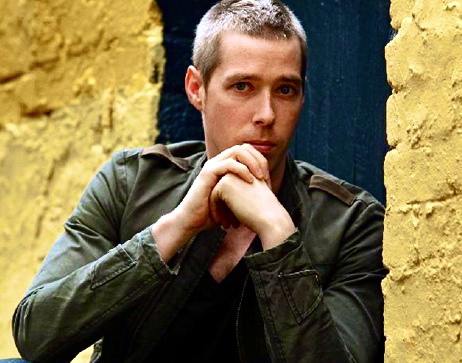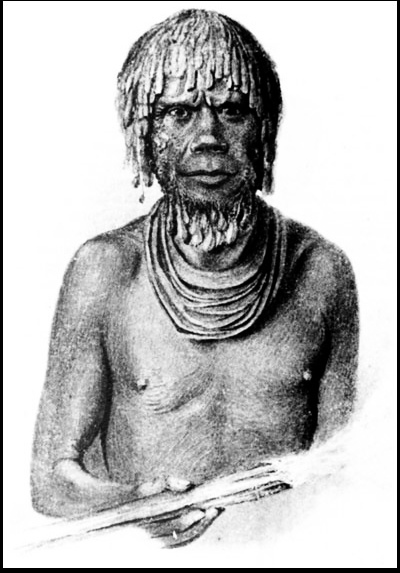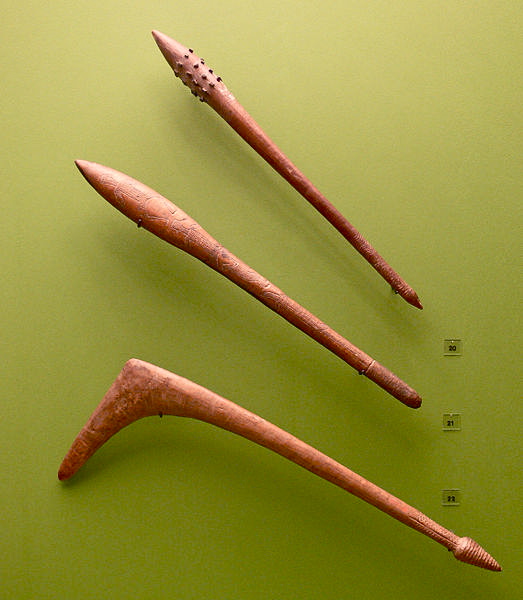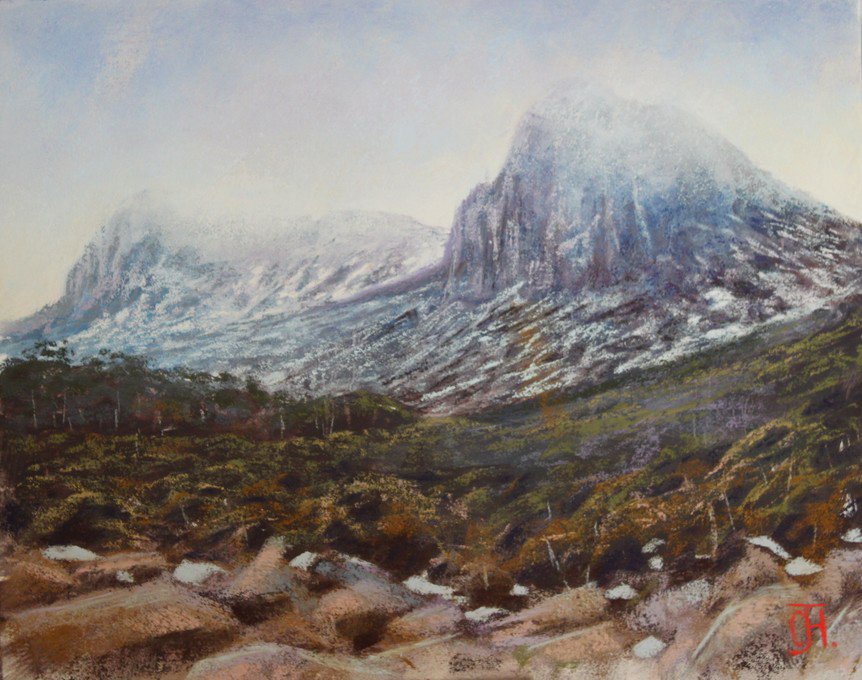Note: This novel was WINNER of the Australian/Vogel’s Literary Award, WINNER of the New South Wales Premier’s Award for New Writing, and WINNER of the Sydney Morning Herald Best Young Australian Novelist Award.
“The Governor is payin’ us to instill a lesson in the obtuse skulls of these dark skins. But I tell you this right now. It may be the blacks what do the instilling. It may be them affixing our bodies to the trees as you would the common criminal of old. I will offer no indemnity against that outcome.” John Batman, to his roving party, 1829.
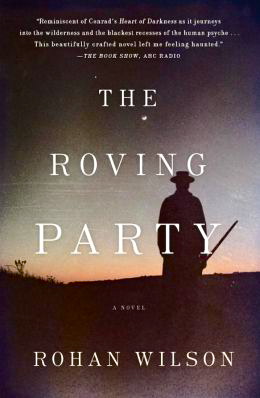 From September, 1829, until early 1831, the British government overseeing the rule of Tasmania as part of its Australian colony, engaged in establishing the shameful “Black Line,” part of its Black War to remove all blacks in Tasmania. Numerous clans of aborigines, who farmed and hunted on “their” Tasmanian lands at will for countless generations learned to hate the whites who appropriated their lands at will, destroyed their farms and habitat, and killed them and their families to take over their traditional lands. Rohan Wilson, a Tasmanian himself, tells the brutal story of the Black Line in the northeast part of Tasmania, in which a white farmer, John Batman, and Manalargena, an aborigine leader, among others, engage in mighty, genocidal battle sanctioned by Colonial Governor George Arthur representing the British crown. As Wilson presents the bloody story of this period, he is sensitive to the historical record, telling of events as they happened, while also paying attention to the incalculable effects of this war on the aborigine people, either through warfare or through the transporting of the few survivors of this war to mainland Australia. His main characters are real and are presented realistically, not as stereotypes of good and evil as they struggle to survive.
From September, 1829, until early 1831, the British government overseeing the rule of Tasmania as part of its Australian colony, engaged in establishing the shameful “Black Line,” part of its Black War to remove all blacks in Tasmania. Numerous clans of aborigines, who farmed and hunted on “their” Tasmanian lands at will for countless generations learned to hate the whites who appropriated their lands at will, destroyed their farms and habitat, and killed them and their families to take over their traditional lands. Rohan Wilson, a Tasmanian himself, tells the brutal story of the Black Line in the northeast part of Tasmania, in which a white farmer, John Batman, and Manalargena, an aborigine leader, among others, engage in mighty, genocidal battle sanctioned by Colonial Governor George Arthur representing the British crown. As Wilson presents the bloody story of this period, he is sensitive to the historical record, telling of events as they happened, while also paying attention to the incalculable effects of this war on the aborigine people, either through warfare or through the transporting of the few survivors of this war to mainland Australia. His main characters are real and are presented realistically, not as stereotypes of good and evil as they struggle to survive.
The “roving party” which farmer John Batman leads in 1829 consists of Batman and eight others who illustrate the island’s cultural mix: Black Bill, a young aborigine who has worked for Batman for years, has a pregnant wife and lives in a “humpy” in the outskirts of Batman’s farm. His familiarity with white life make him suspect as far as the local blacks are concerned. William Gould, Batman’s manservant, and two other blacks, Crook and Pigeon, members of the Dhuareg clan, are from Parramatta, an area near Sydney. They have traveled to Tasmania to work for Batman in exchange for their emancipation papers. The four remaining members of the roving party are prisoners transported to Tasmania for crimes in England. Uneducated and unskilled, these men will be pardoned by the governor if they perform well in the war against the blacks. James Clarke, known as “Horsehead,” serves as a foil to the young Thomas Tooey, a naïve youth still in his teens, sent to Tasmania seemingly by accident. Jimmy Gumm and Howard Baxter, also prisoners, fill out the roving party. The prisoners do not trust the blacks, the blacks and Batman do not trust the prisoners, no one has enough food, and none of the prisoners have warm clothing – or any shoes! – for this war in the mountainous northeast region of Ben Lomond during winter.
The novel opens with a dramatic scene in which Manalargena, a black clan leader, confronts Black Bill outside the “humpy” Bill shares with his pregnant wife. Manalargena’s men, painted for war, are armed with the spears and waddies they use for hunting, and their wild hunting dogs are ferocious. Manalargena and his men want Black Bill to join his fellow blacks in the war against the well-armed white farmers. From the outset, however, the reader understands that these issues are not simple. Bill, acculturated from his years working for Batman, cannot make that promise, telling Manalargena that he is obliged to Batman. As a parting shot, however, Manalargena tells Bill ominously that his unborn child is “a boy. Strong boy…My demon tell me.”
From this point on, the drama parallels the historical record of the real battles in Ben Lomond and south. Author Wilson is at his best as the party moves through various geographic areas, describing in vibrant, intensely visual prose what they are all seeing as they go. As they first leave Batman’s holdings, he notes that “It was a stretch of forest entirely hostile to folk of any nation, native or not. That beggardly clutch hung in rags and animal pelts and toting rusted firearms walked that ground as if pilgrims guided by the word of a demented god.” Stories are revealed as they walk, many of them grisly, but at the same time, the author also gives us passages celebrating the great natural beauty of the land and the natural kindness of some characters toward the people they meet. Young Thomas, the youngest prisoner, instinctively responds to the plight of a young woman taken prisoner by the roving party, bringing her tea, and entertaining her toddler.
The complex relationships and unstated loyalties within the roving party become clearer as the action evolves. On one occasion, when Batman kills a black, young Thomas asks Black Bill if they are “runnin’ afoul of the law…Batman up and shot that black bugger.” In an astonishing commentary on the issues and culture of the times, Black Bill answers, “You can’t murder a black…any more than you can murder a cat.” On a later occasion, however, Black Bill unconsciously shows his own confusion about his identity when they are confronted by an enormous snake, which Batman is about to kill: “We don’t kill them,” he says as Batman is about to destroy it. To which Batman responds, “Well, I most certainly do, my dusky friend.” Some time later, after Bill catches the snake and throws it harmlessly away, Batman confronts him asking, pointedly, “Who’s we?”
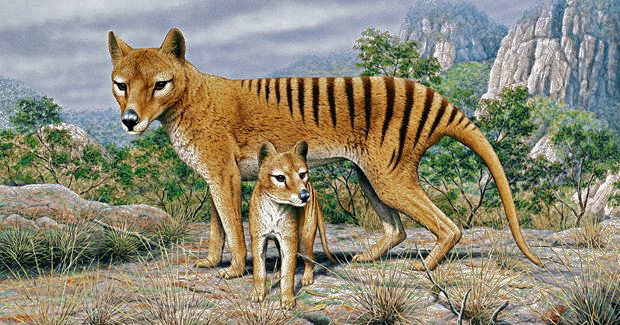
Tasmanian tiger, Tasmanian wolf, or thylacine, now extinct. At one point on their trek, the roving party is threatened by a “Tasmanian wolf.”
Though the characters do not always come fully alive, and the fast action sometimes feels artificially “historical,” rather than a direct result of specific actions by the characters, the novel is an important addition to the story of Tasmania and its history. The wonderfully vivid descriptions of the natural world, which make the unique setting come alive in this era in which one is especially conscious of environmental impacts, are stunning. The disappearance of all but a handful of Tasmanian aborigines, the killing of every known Tasmanian wolf (Tasmanian Tiger/Thylacine), and the near disappearance of all the Tasmanian devils over the last two hundred years, as a result of human behavior, are, however, obvious reasons for alarm. With global warming now threatening the polar icecap (and Tasmania the closest land area to Antarctica), this island will also be a “canary in the mine” regarding warming effects on land areas outside of the Antarctic and Arctic. Author Rohan Wilson, writing ostensibly about the Black Line in 1830, has also touched on environmental “lines” two hundred years later.
ALSO by Rohan Wilson: TO NAME THOSE LOST
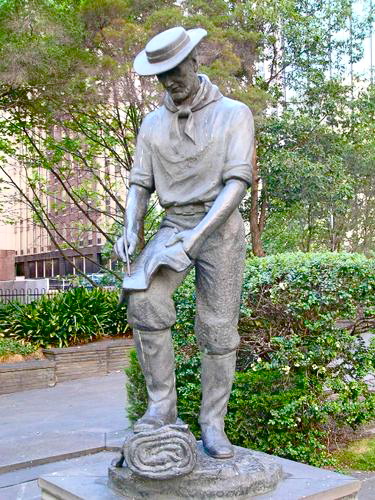
The statue of John Batman, founder of Melbourne and participant in Tasmania’s Black Line, was commissioned by the Melbourne City Council, unveiled in 1979.
Photos, in order: The author’s photo appears on https://medium.com/ Though it is not credited there, it is very similar to a photo by James Croucher and may be his work.
The picture of Manalargena may be found on http://ourtasmania.webs.com
The waddy, a traditional aborigine weapon, is shown on http://en.wikipedia.org/
“Through the Mists,” a pastel of the Ben Lomond area of northeast Tasmania, is by Clifford How. http://www.tasmanianart.com.au/
The Tasmanian Tiger, or Tasmanian Wolf, or Thylacine, is shown here. The roving party was threatened by one of these creatures on their trek: http://www.talismancoins.com/
The statue of John Batman appears on this site: http://monumentaustralia.org.au
